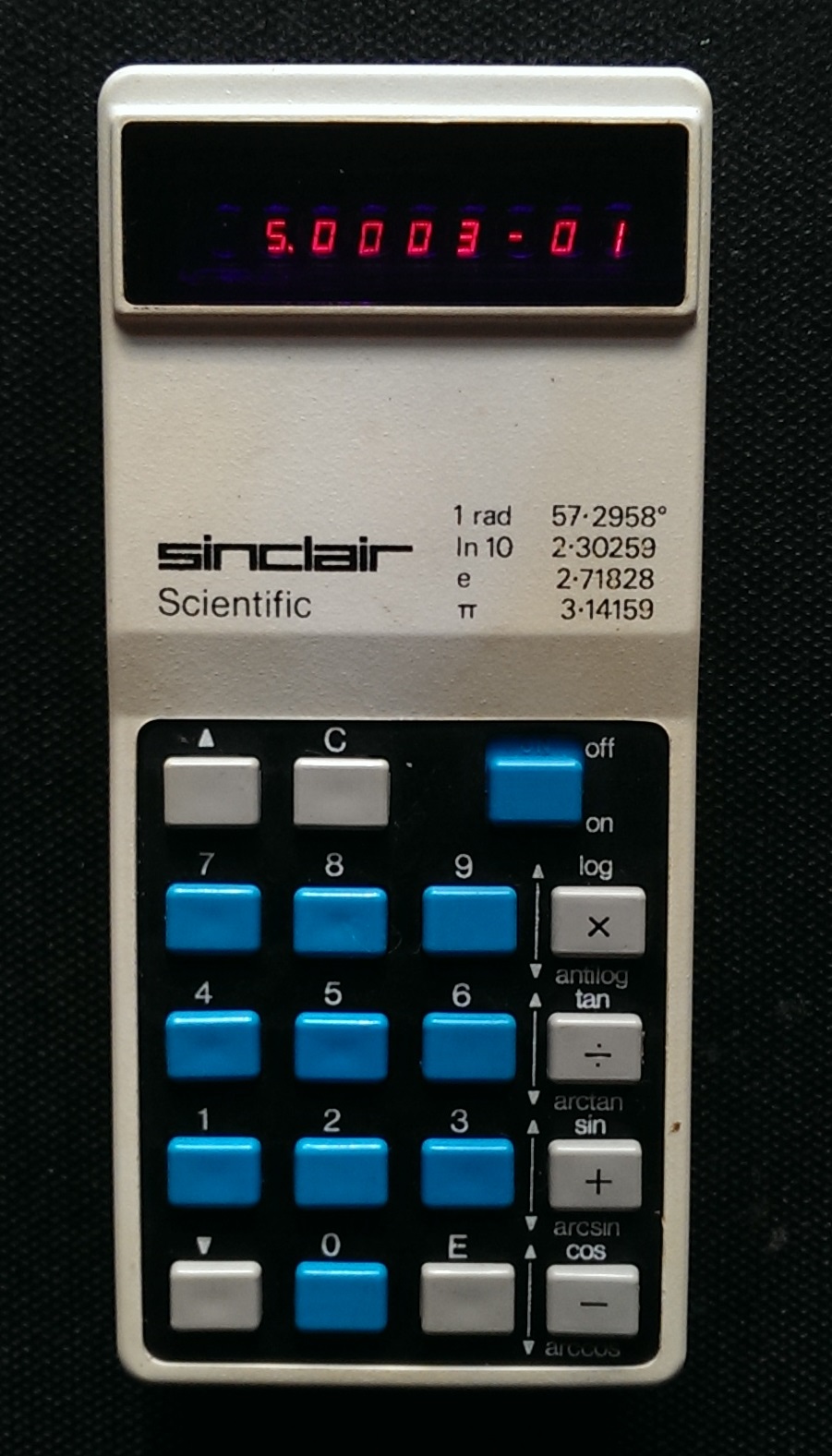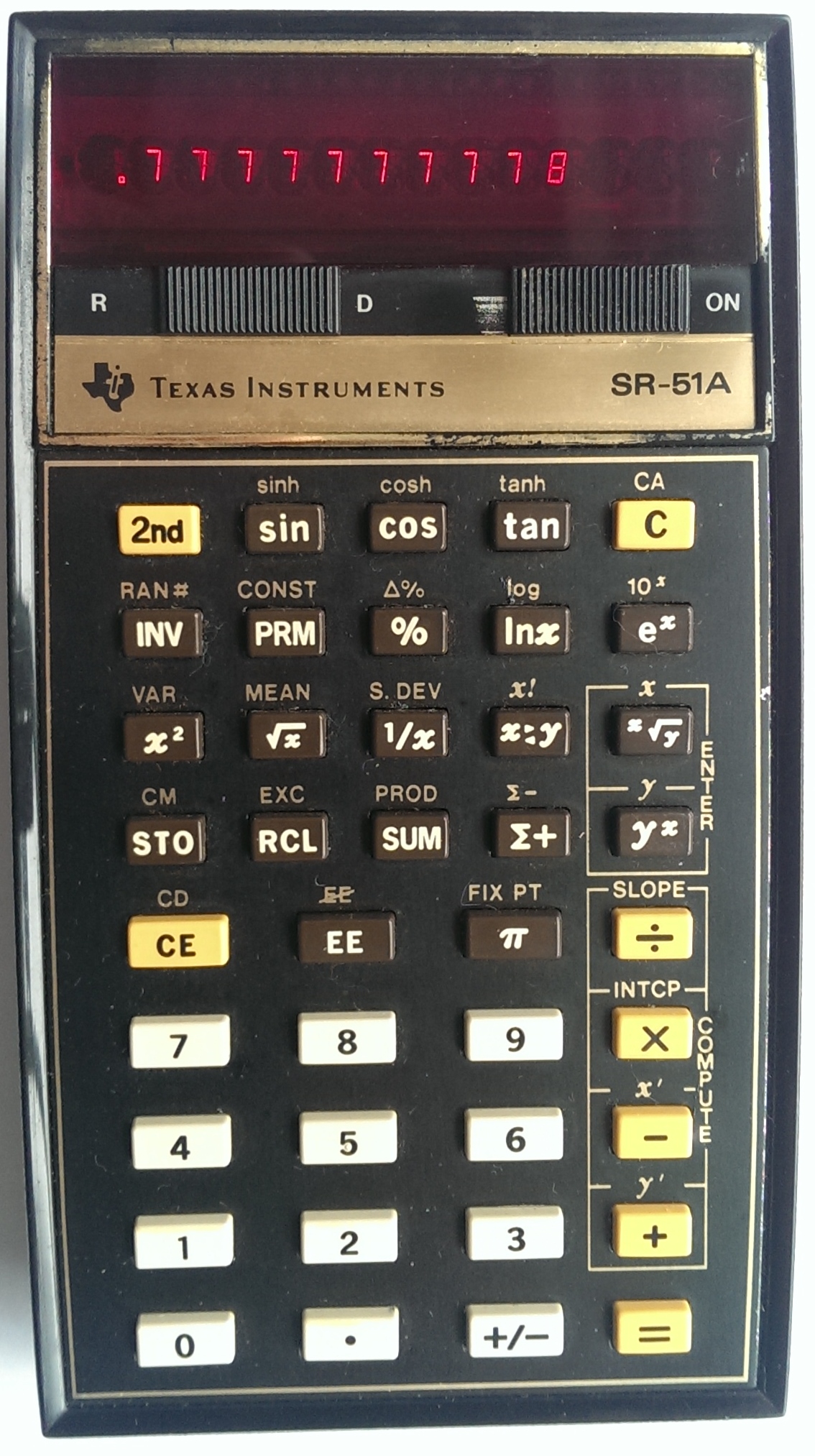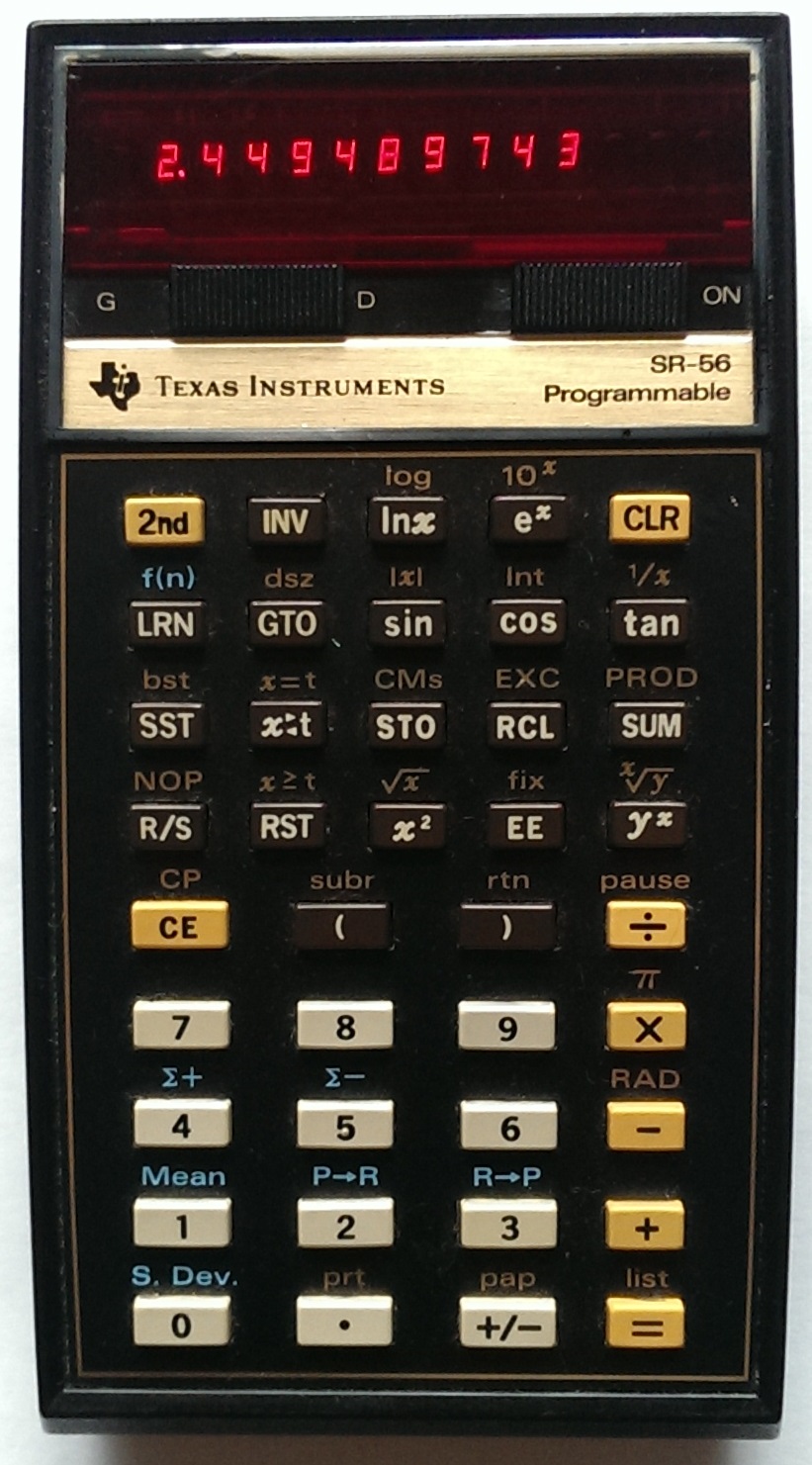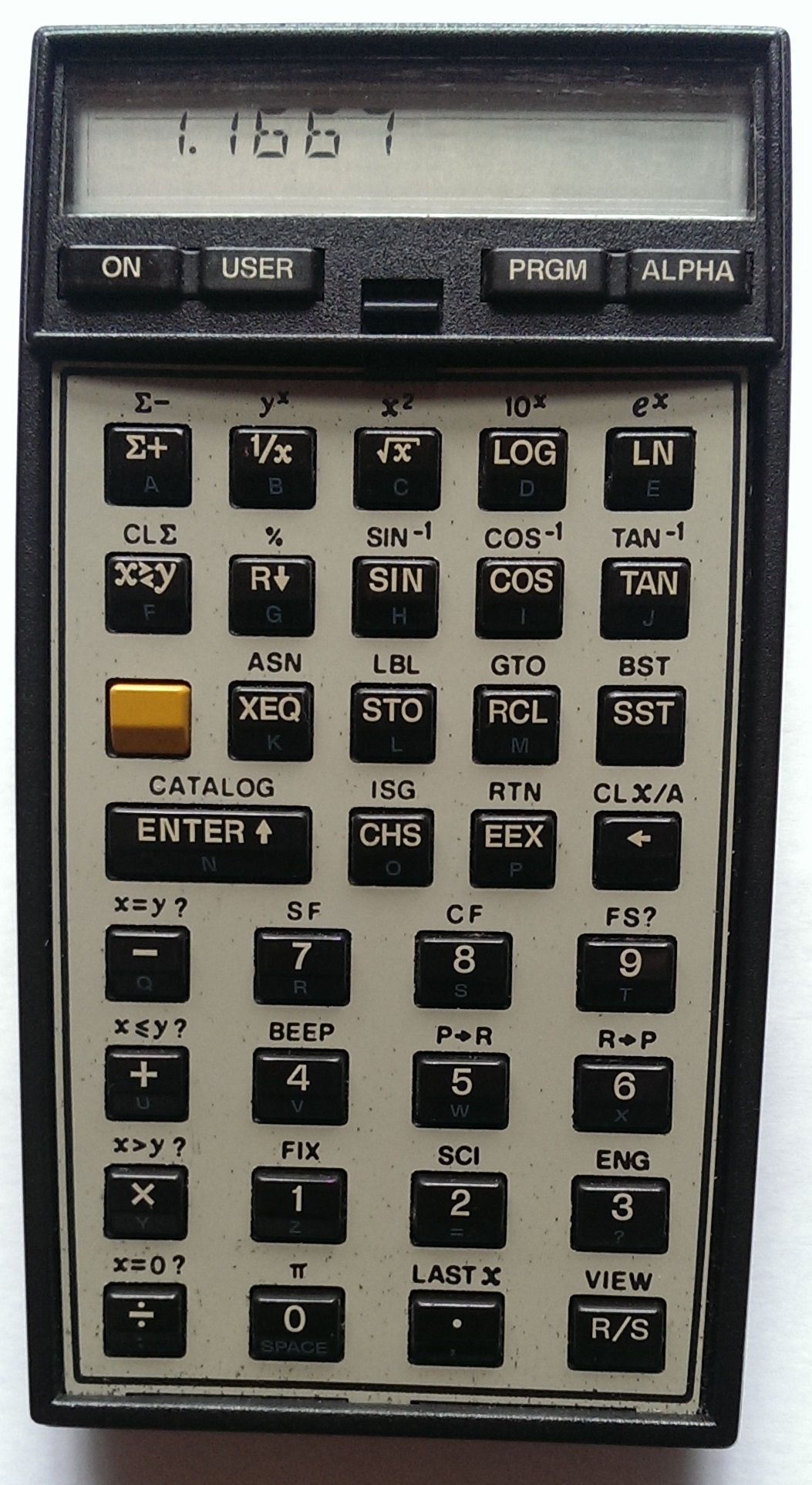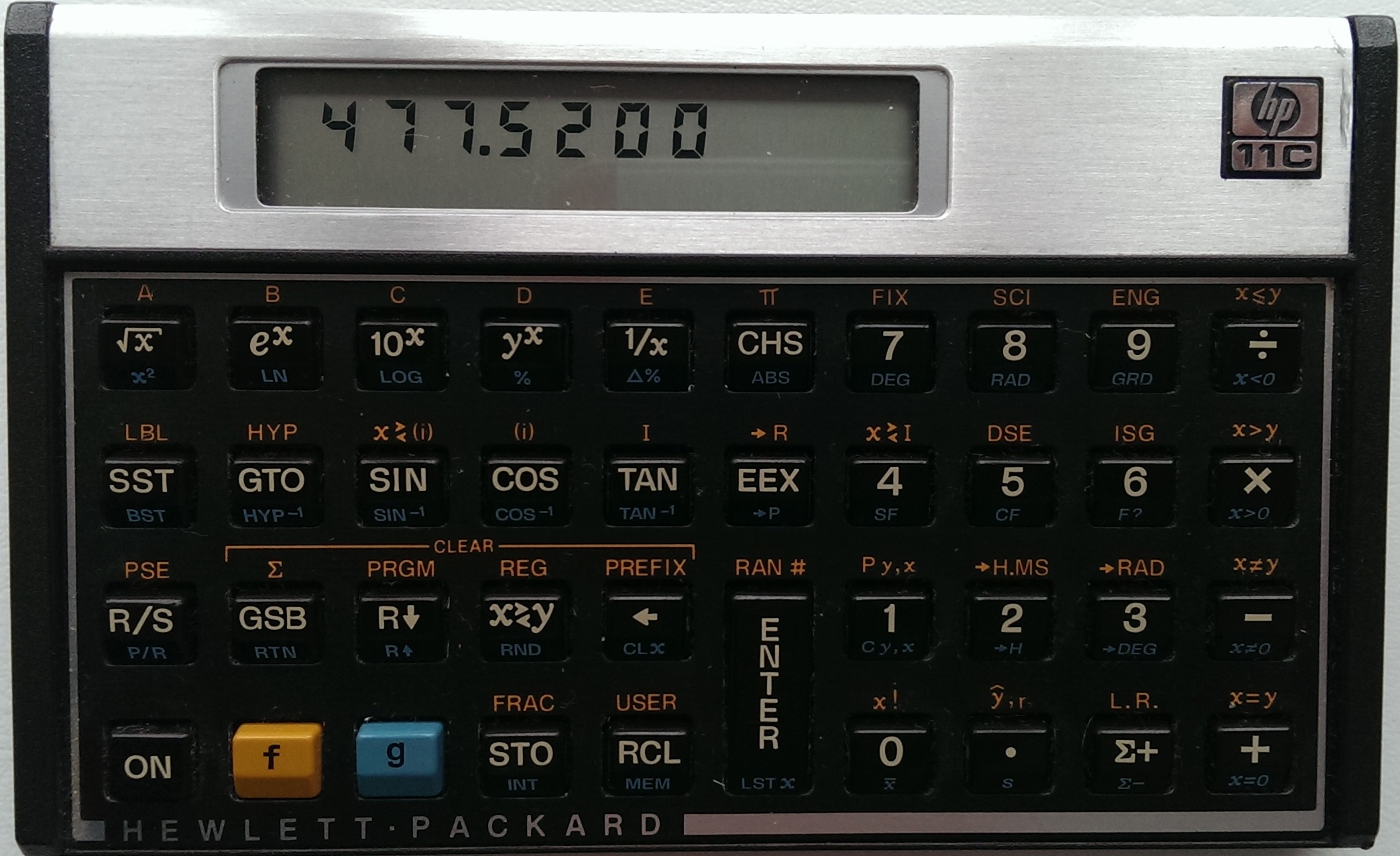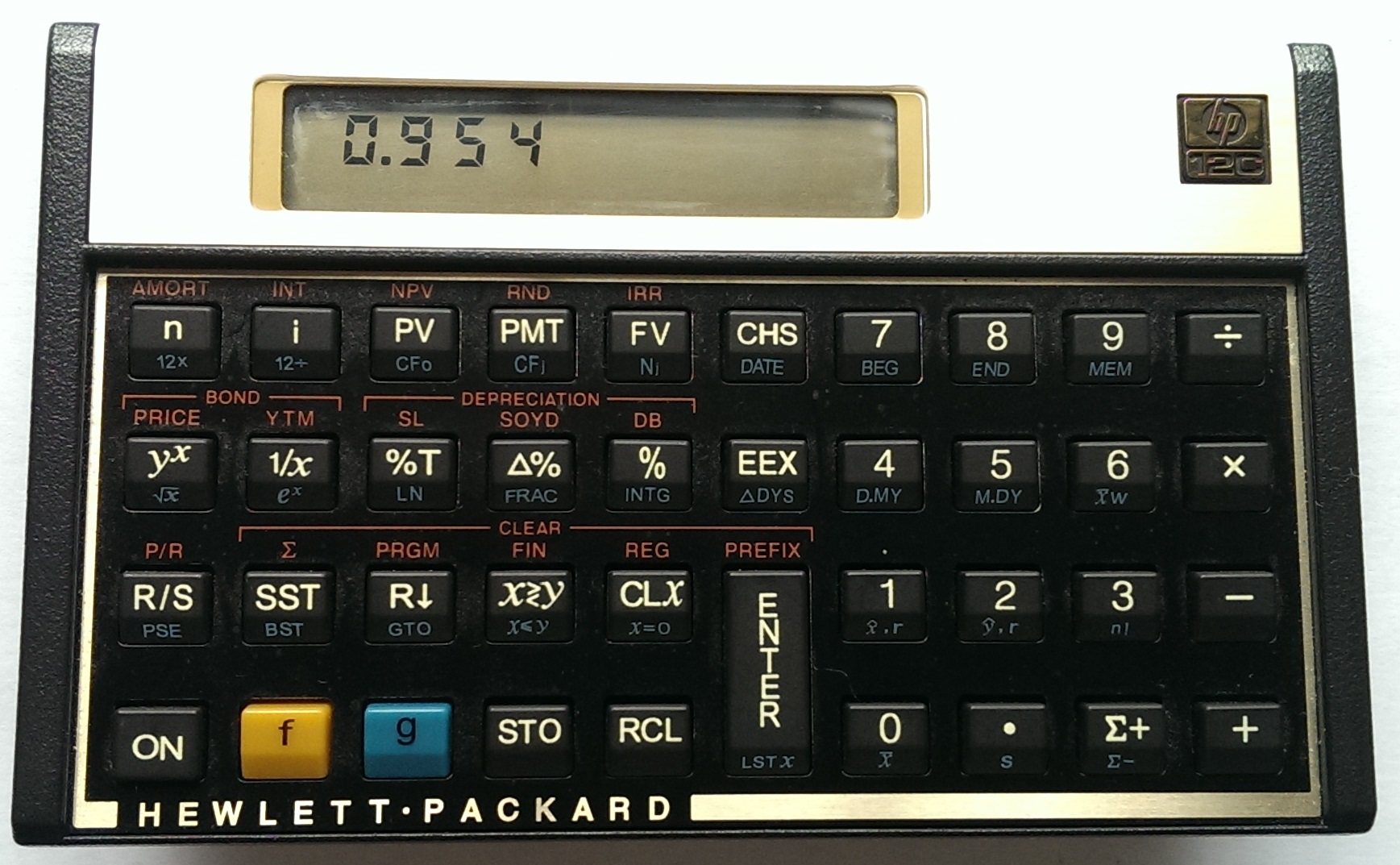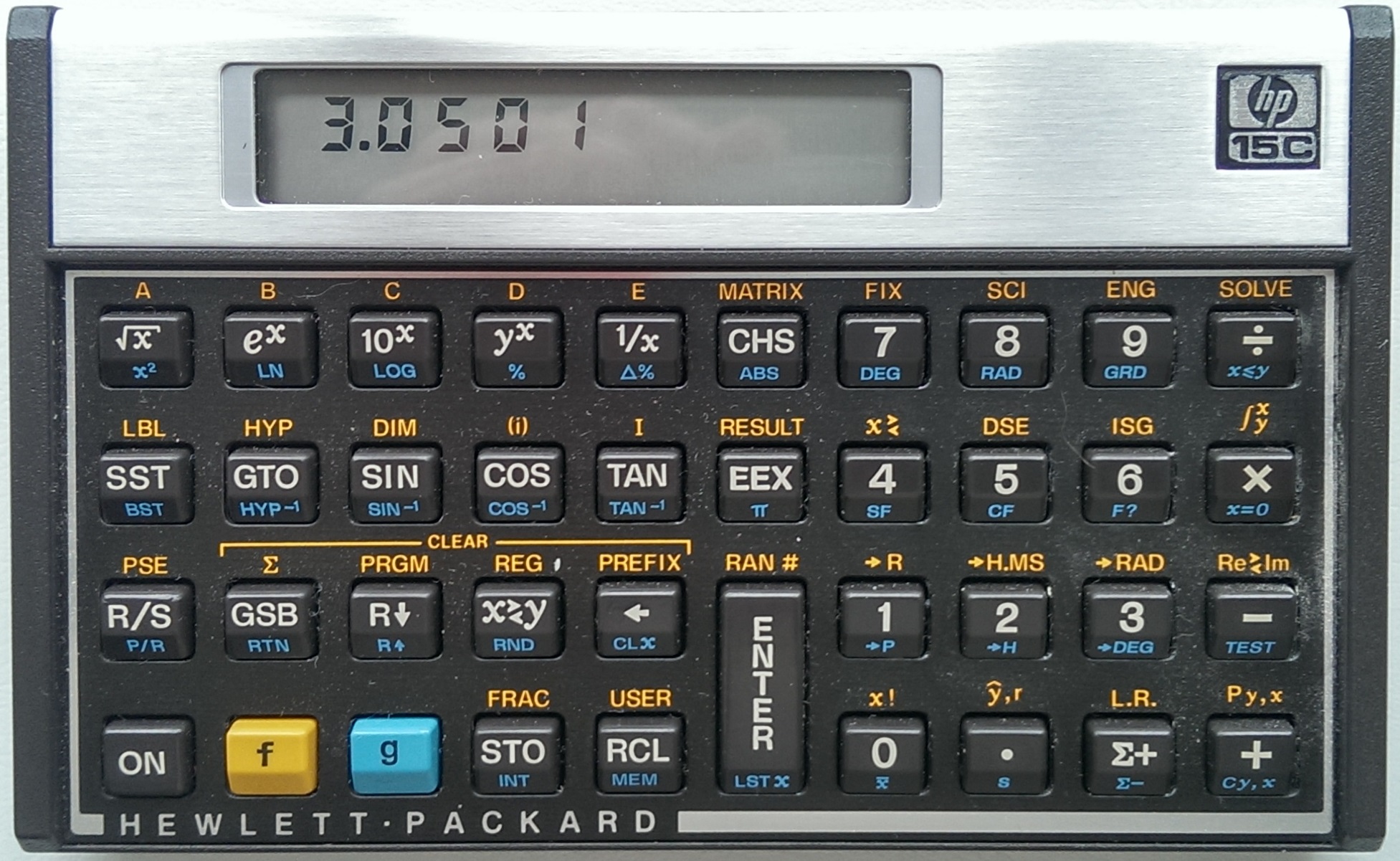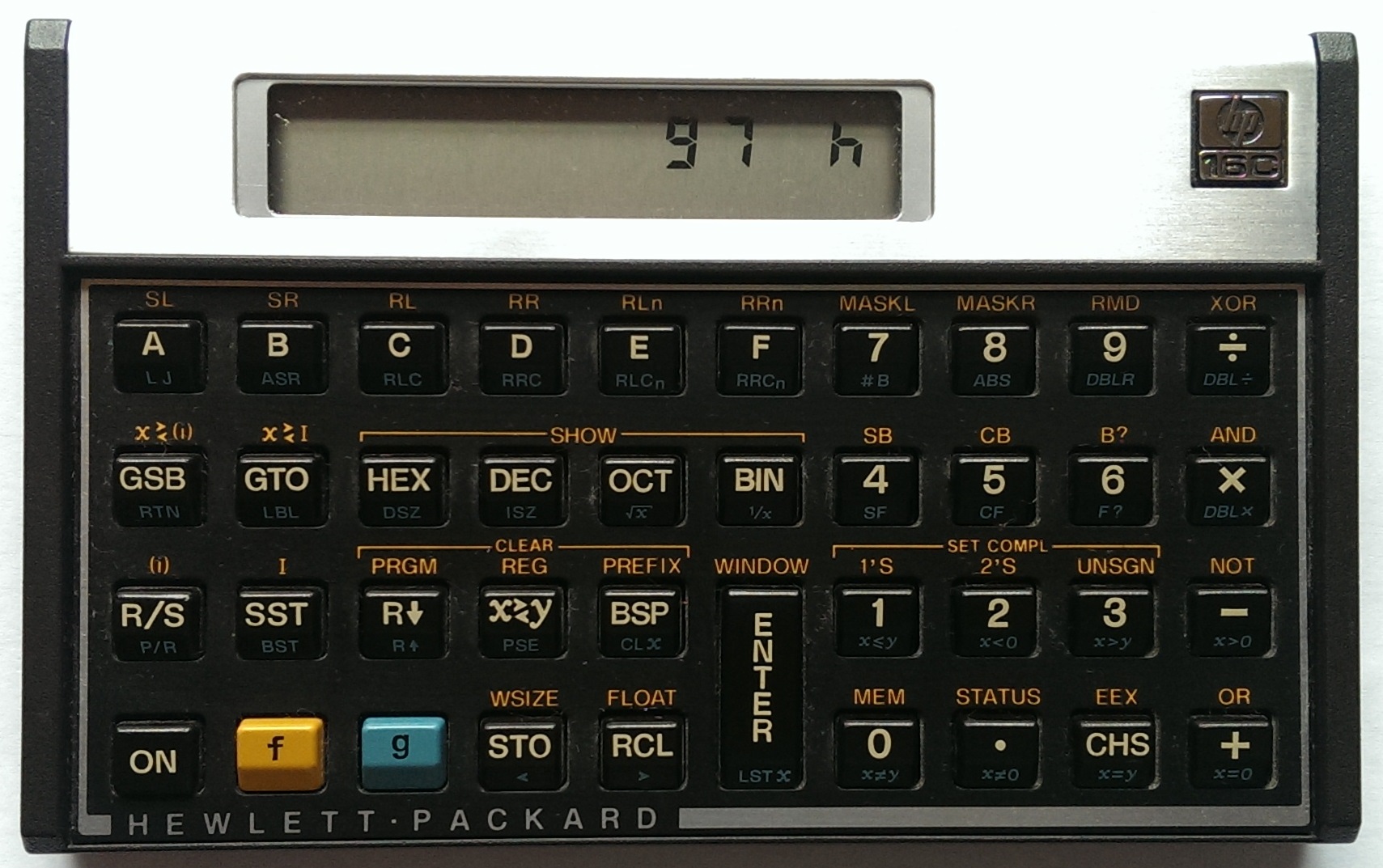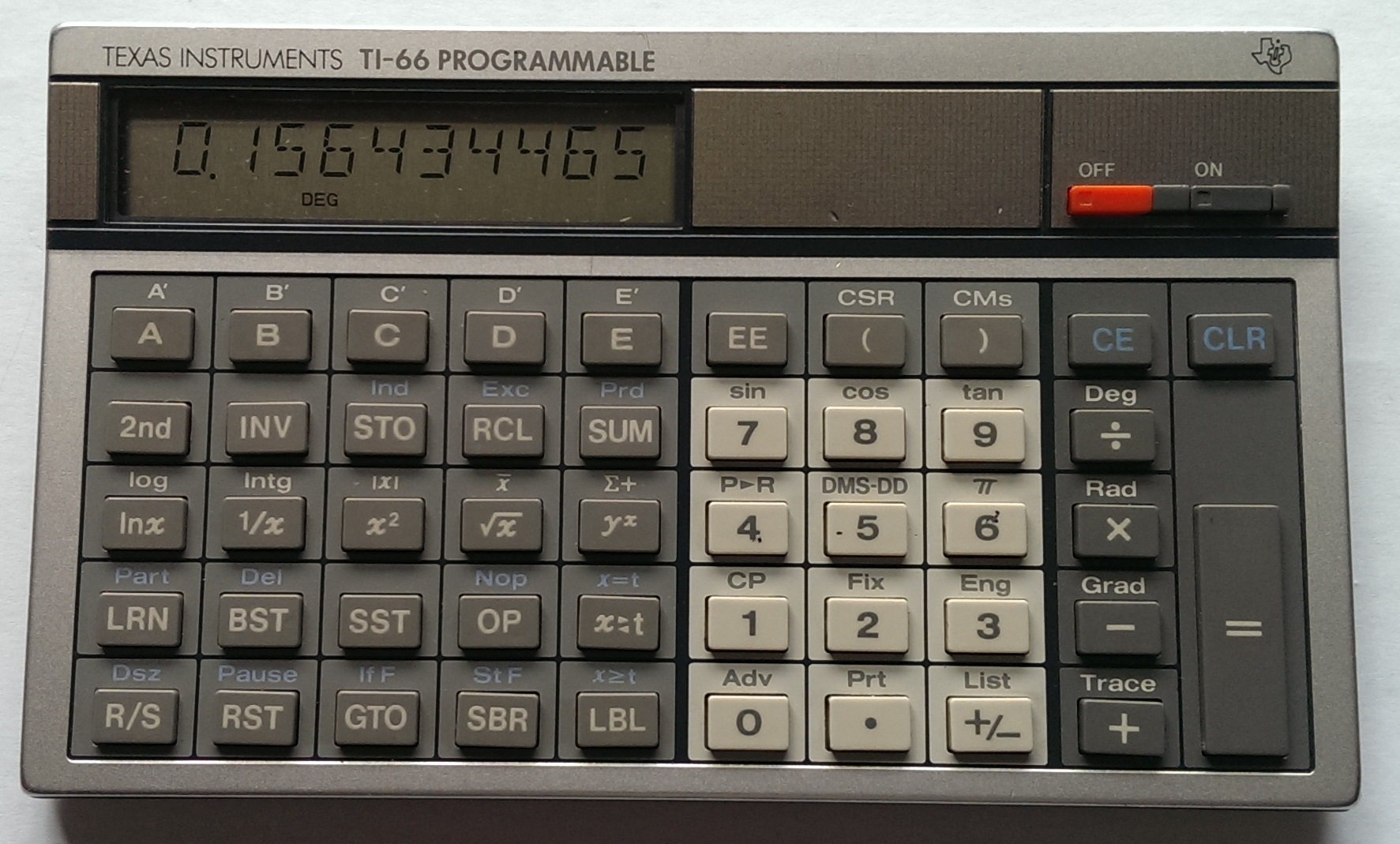 |
|
|
A collection of photos of my favourite calculating devices and some programs written for them. |
|
| Sinclair Scientific calculator |
I bought this as a kit in 1974/1975. Amazingly it
worked first time and overnight replaced my slide rules for
calculations. It was slow and accurate to only 2 decimal
places (Sinclair claimed 3 decimal places!) and had a limited set of scientific functions. It also used
the Reverse Polish Notation (RPN) system of calculation. This was
in use every day until 1977 when it stopped working. The example shown here was obtained from eBay in 2019. A web-based emulation of this calculator can be found here. The Operating Instructions Manual is here. |
|
Texas Instruments SR-51A
|
This SR-51A is one of two I acquired for very
different reasons. The first SR-51A I bought was non-working and
bought really to get the battery pack, as this was common to most of
my 1970s Texas calculators. The battery contacts in the calculator were badly corroded. However, when these were replaced the calculator was found to be fully working. The second SR-51A was bought because it had the manuals, charger and case. After servicing this second machine also worked. This is arguably one of the best ergonomically designed of the early Texas calculators. It is not programmable but includes most of the required scientific functions for general use and has three memories. It is interesting to note that several keys refer to each memory; STO 0, STO 2 and STO 8 all reference the same memory location. |
|
Texas Instruments SR-56
|
The SR-56 was an amazing calculator which I
bought in 1977 to replace my obsolete Sinclair Scientific. Not only did it have a very good set of scientific
functions built in but also it was programmable. One could enter
programs of up to 100 steps. The programming model included
conditionals and subroutines. This was my workhorse calculator until
about 2015. A second non-working SR-56 was obtained in 2018 and, after servicing, was brought back to life. |
|
Texas Instruments TI-59
|
At the time this came out it represented the
pinnacle of TI's programmable calculators. With up to 960 program steps
and a built in magnetic card reader/writer it was a hugely powerful
calculator. The calculator can also accept a number of ROM modules
which can change the function of the calculator. I have managed to collect most of the ROM modules and only lack the Electrical Engineering, RPN and Agriculture ones. This is one of two TI-59s I have and was bought in 2016 along with a PC-100C printer cradle. Both of these calculators have had their card readers serviced to replace perished drive wheels. |
|
Hewlett Packard HP-41CX
|
The ultimate development of the HP-41C. As well
as having the expanded memory size, this variant includes a
real-time clock and an X-memory system which, among other
things, can be used as a simple filing system for saving programs.
The HP-41CX uses RPN. My HP-41CX was purchased in 2012. There are many peripherals available for the calculator. They plug into ports at the top. These include ROM modules, which expand the capabilities of the calculator, a magnetic card reader/writer for program storage, a printer and a bar code reader for inputting programs saved as bar codes. This is a very versatile calculator allowing programs to be saved to magnetic strips. Programs can also be developed on a PC, printed as bar codes and imported into the HP-41CX using the bar code reader. Some of my programs, information and more pictures can be found on the HP-41C page. |
|
Hewlett Packard HP-10C
|
Bought in 2019 this was the final addition to
my collection of the HP 10C series of calculators. It was the last
of the range to be produced and is the basic, entry-level model. It
is, however, very difficult to find, especially complete with
manual.
|
|
Hewlett Packard HP-11C
|
Bought in 2017 this is a programmable
scientific calculator. One neat feature is that it has a built-in random number generator. Unfortunately no user manual came with this calculator and it proved difficult to source as an item by itself. I had to obtain a copy from the USA. A PDF copy is available from the Museum of HP Calculators. |
|
Hewlett Packard HP-12C
|
Bought in 2018, complete with manual, this is a financial calculator. It uses RPN and is programmable. I rarely use financial functions and this was bought to complete the set of HP-1xC calculators. |
|
Hewlett Packard HP-15C
|
This calculator was bought in 2019. It is now
my 'go to' calculator for complex calculations and programming. The
calculator did not come with the user manual. I managed to find one
for a reasonable price in the USA. This is a superb calculator with some very advanced features. Its complex number arithmetic could be useful for designing filter circuits. That is something I shall have to explore. Some of my programs for this can be found on the HP-15C page. |
|
Hewlett Packard HP-16C
|
Bought in 2017 this is one of my real
favourites. It is a computer programmer's calculator working in binary, octal, denary and hexadecimal. Also programmable, it can mimic many machine code operations. It is used regularly when working with 6502 machine code for debugging and testing. |
|
Texas Instruments TI-66
|
This has a similar programming model to the
TI-59. It is a LCD calculator and is non-volatile. It is also
incredibly slow at running programs.
I quite like it though and use it for day to day calculations. Its battery life is amazing. |
| Home | |
| © 2018 flaxcottage.com | |
